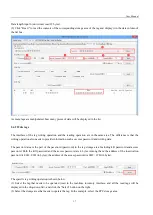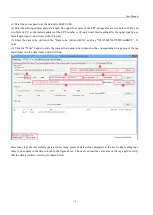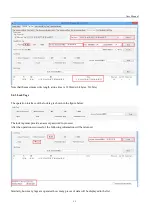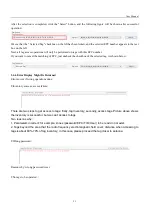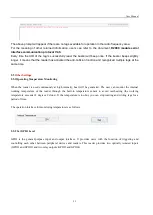
User Manual
15
The working time of each antenna can be set independently. The number of round 1 means that the working time of
the antenna is 50ms, and the number of round*50ms is the working time of the antenna. Set the appropriate number of
round according to the number of tags in front of the antenna. The default number of round is 1.
The sequence of antenna switching and whether to select the antenna inventory can be set as shown in the figure
below.
2.4
Accessing ISO-18000-6C Tag
Click the "Access Tag" selection box to enter the access tag interface, as shown below:

















